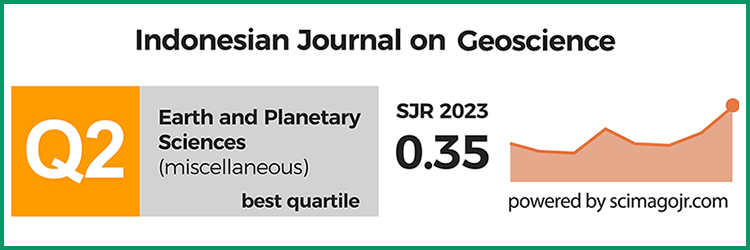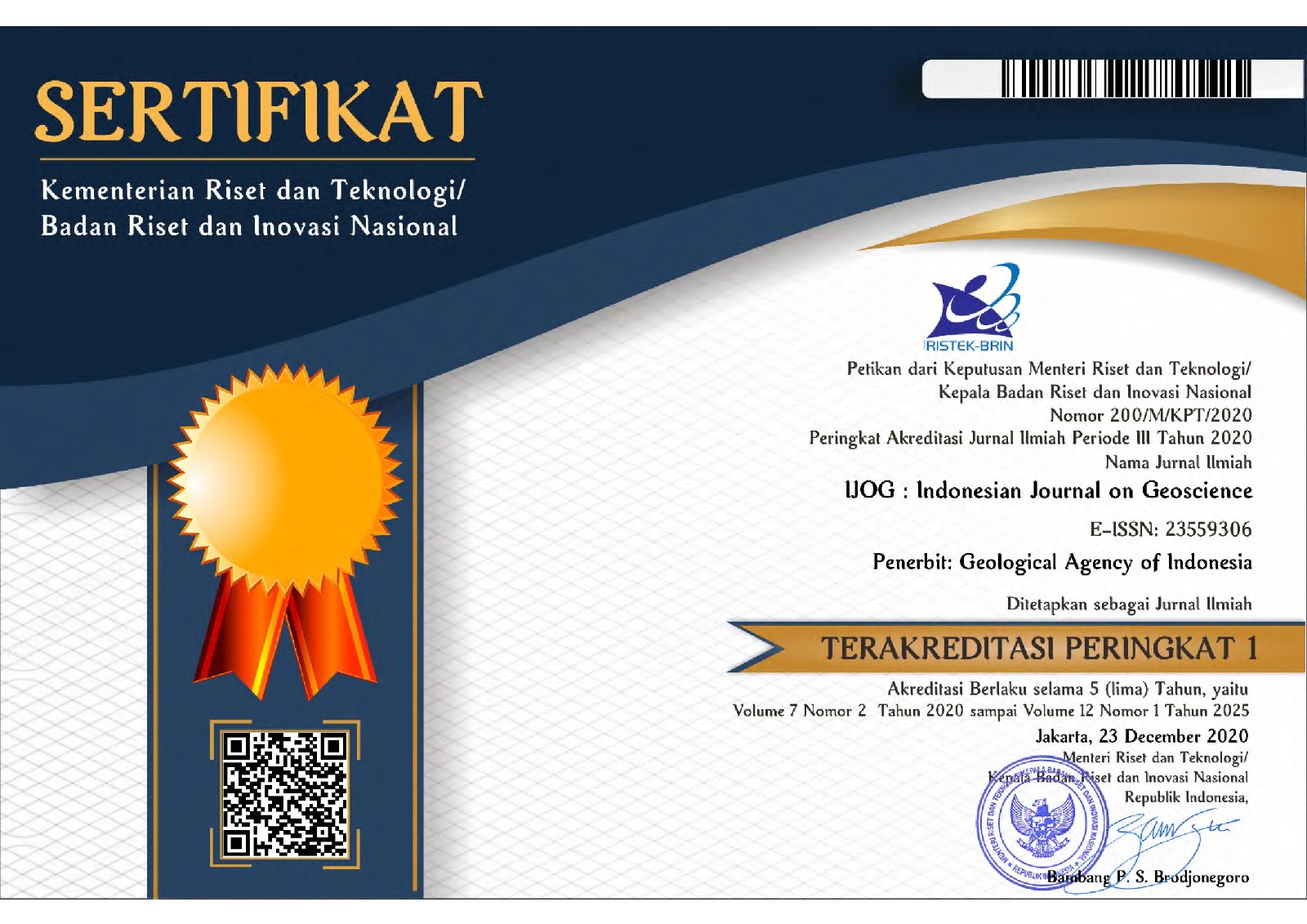Reservoir Modeling of Carbonate on Fika Field: The Challenge to Capture the Complexity of Rock and Oil Types
DOI:
https://doi.org/10.17014/ijog.1.2.83-97Keywords:
reservoir modeling, carbonate, rock and oil types, simulation, Fika FieldAbstract
The carbonate on Fika Field has a special character, because it grew above a basement high with the thickness and internal character variation. To develop the field, a proper geological model which can be used in reservoir simulation was needed. This model has to represent the complexity of the rock type and the variety of oil types among the clusters. Creating this model was challenging due to the heterogeneity of the Baturaja Formation (BRF): Early Miocene reef, carbonate platform, and breccia conglomerate grew up above the basement with a variety of thickness and quality distributions. The reservoir thickness varies between 23 - 600 ft and 3D seismic frequency ranges from 1 - 80 Hz with 25 Hz dominant frequency. Structurally, the Fika Field has a high basement slope, which has an impact on the flow unit layering slope. Based on production data, each area shows different characteristics and performance: some areas have high water cut and low cumulative production. Oil properties from several clusters also vary in wax content. The wax content can potentially build up a deposit inside tubing and flow-line, resulted in a possible disturbance to the operation. Five well cores were analyzed, including thin section and XRD. Seven check-shot data and 3D seismic Pre-Stack Time Migration (PSTM) were available with limited seismic resolution. A seismic analysis was done after well seismic tie was completed. This analysis included paleogeography, depth structure map, and distribution of reservoir and basement. Core and log data generated facies carbonate distribution and rock typing, defining properties for log analysis and permeability prediction for each zone. An Sw prediction for each well was created by J-function analysis. This elaborates capillary pressure from core data, so it is very similar to the real conditions. Different stages of the initial model were done i.e. scale-up properties, data analysis, variogram modeling, and then the properties were distributed using the geostatistic method. Finally, after G&G collaborated with petrophysicists and reservoir engineers to complete their integrated analysis, a geological model was finally created. After that, material balance was needed to confirm reserve calculations. The result of OOIP (Original Oil in Place) and OGIP (Original Gas in Place) were confirmed, because it was similar to the production data and reservoir pressure. The model was then ready to be used in reservoir simulation.
References
Asquith, G. B., 2004. Basic well log analysis for geologist. American Association of Petroleum Geologist. Methods in Exploration. Tulsa, Oklahoma, 16, p.12-135.
Erawati, F.A., 2013. Utilization of Advance Seismic Interpretation for Estimation Reservoir Hydrocarbon Distribution on Carbonate, FIKA Field Study Case, South Sumatera Basin, M.S. Thesis, University of Indonesia.
Handayani, R.S.W., Setiawan, D., and Afandi, T. 2008.Reservoir Characterization of Thin Oil Column to Improve Development Drilling in a Carbonate Reservoir: Case Study of Gunung Kembang Fields. Proceedings of Indonesian Petroleum Association, 32nd Annual Convention and Exhibition, Jakarta, Paper, IPA 08-E-160, 15pp.
Caroline L.T. J, 2005. Lithofacies Characterization of Soka Field Based on Core Calibration on Image Data and Wireline Log for better Prediction of Reservoir Properties of the Baturaja Formation, Soka Field, South Sumatera. M.S. Thesis, University of Brunei Darussalam.
LAPI ITB, 2011. Geochemical Study and Evaluation in South Sumatra Basin (Soka, Lagan, Matra and Iliran Regions), Final Report.
Rashid, H., Sosrowidjojo, I. B., and Widiarto, F. X., 1998. Musi Platform and Palembang High: A New up Straight Look at The Petroleum System. Proceedings of Indonesian Petroleum Association, 26th Annual Conven- tion and Exhibition, Jakarta, Paper, IPA 98 - I - 107, 11pp.



















